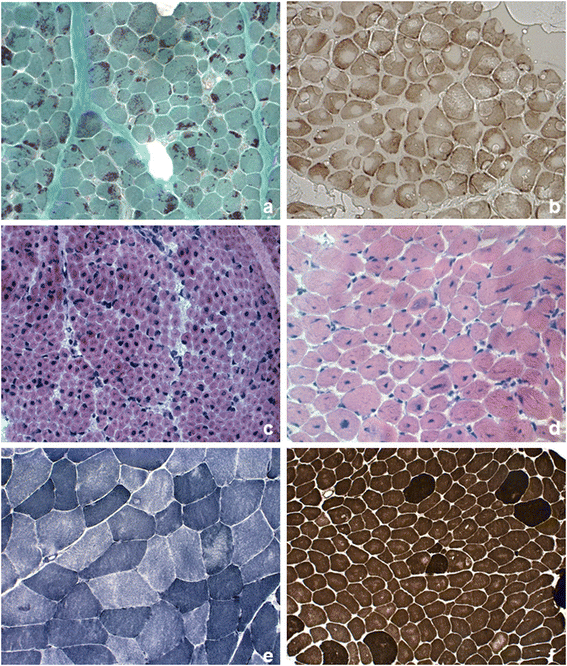Congenital myopathies: clinical phenotypes and new diagnostic tools
- PMID: 29141652
- PMCID: PMC5688763
- DOI: 10.1186/s13052-017-0419-z
Congenital myopathies: clinical phenotypes and new diagnostic tools
Abstract
Congenital myopathies are a group of genetic muscle disorders characterized clinically by hypotonia and weakness, usually from birth, and a static or slowly progressive clinical course. Historically, congenital myopathies have been classified on the basis of major morphological features seen on muscle biopsy. However, different genes have now been identified as associated with the various phenotypic and histological expressions of these disorders, and in recent years, because of their unexpectedly wide genetic and clinical heterogeneity, next-generation sequencing has increasingly been used for their diagnosis. We reviewed clinical and genetic forms of congenital myopathy and defined possible strategies to improve cost-effectiveness in histological and imaging diagnosis.
Keywords: Congenital myopathy; Muscle MRI; Muscle biopsy; Next generation sequencing.
Conflict of interest statement
Authors' information
#The Italian Network on Congenital Myopathies is made of the following researchers:
Angela Berardinelli1, Enrico
Ethics approval and consent to participate
This study was approved by the ethics committee of IRCCS Stella Maris, Pisa, Italy and other participating institutions.
Consent for publication
All the procedures complied with the Helsinki Declaration of 1975. DNA, morphological, MRI and clinical studies were performed with parental written informed consent.
Competing interests
The authors declare that they have no competing interests.
Publisher’s Note
Springer Nature remains neutral with regard to jurisdictional claims in published maps and institutional affiliations.
Figures

References
-
- Fardeau M, Tome F. Congenital myopathies. In: Engler AG, Franzini-Armstrong C, editors. Myology. New York: McGraw-Hill; 1994. pp. 1487–1533.
Publication types
MeSH terms
Grants and funding
LinkOut - more resources
Full Text Sources
Other Literature Sources
Medical

